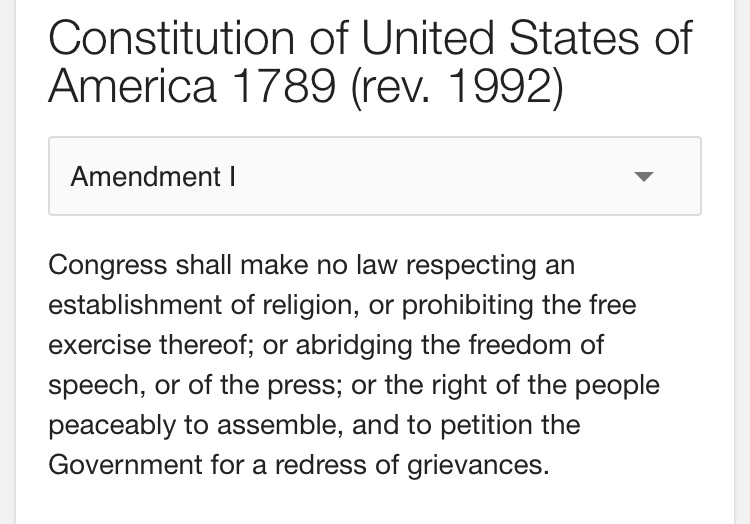Travel Ban History In The USA

Protest in Washington DC at one of Trump’s hotels after the travel ban was made

This is one of the parts of the Constitution that Trump’s travel ban violated
Recently the new president of the United States, Donald Trump, has made a travel ban that doesn’t allow people who are not current citizens of the US and are from Syria, Iraq, Iran, Yemen, Libya, Somalia, and Sudan to enter the USA, under any circumstances. This order is only supposed to last for a ninety-day period. The ban has produced protests around the country in many places, including airports and US court houses. Even though some have been more restrictive than others, there has been a history of travel bans in the US. The past travel bans are:
- The Page Law: This law was the first law to officially ban people from the USA. It was created in 1875, mainly to address Asian countries, under the Grant administration. The Page Law stated that there could be no entry of prostitutes or convicts to the United States.
- The Chinese Exclusion Act: It was put in place by Chester Author in 1882, banning all Chinese laborers from entering the USA and denying citizenship to the ones who already lived here.
- The Anarchist Exclusion Act: This act was made when Teddy Roosevelt was president, and it stated that foreign anarchists that believed in overthrowing the government, especially in a violent manner, were not welcome in the USA and would be kicked out. There were also certain health exclusions involved in this act.
- “Gentleman’s Agreement”: This agreement was made in 1907 by the Teddy Roosevelt administration, and it banned Japanese laborers from interring the country.
- Immigration Act of 1917: It was created under the Woodrow Wilson administration, and it stopped people from eastern Asia and The Pacific Islands from entering the USA. This law also introduced the literacy test in the process of becoming a citizen and entering the country.
- The Immigration Act of 1921: This was also known as the “Quota Act,” and it limited immigration from southern and eastern Europe, where people were mainly of the Catholic religion, and favored immigrants from northern and western Europe who were mainly Protestant. This came during the Wilson and Cleveland administrations.
- The Immigration act of 1924: This act reduced the number of immigrants from southern and eastern Europe, and only allowed each nationality to let in two percent of what they already had in the US population.
- In 1970, President Carter and his administration made a law where they took existing visas from Iranians and did not issue any new visas to Iranians except for strongly convincing humanitarian reasons.
- When Ronald Reagan was president in 1987, he banned people with HIV from entering America.
- The Anti-Terrorism and Effectuate Death Penalty Act: Put into action under the Clinton administration, this act banned alien terrorists from entering the US.
- After the 2001 attack on 9/11, the government stopped allowing refugees into the country temporarily.
- President Obama stopped processing the requests for visas for Iraqi people for six months in 2011 in response to a threat.
- The Visa Waiver Program Improvement and Terrorist Travel Prevention Act of: This act was made in 2015 under the Obama administration, and it made it harder for people from Libya, Yemen, Iran, Iraq, Somalia, Sudan, and Syria to get a visa and travel here. They did more background checks, and there were more restrictions added. This was the last one made before Trumps travel ban of 2017.
None of these travel bans exist anymore, and most were abolished soon after they were made. The bans were all a product of fear, and mostly were unpopular with the public. Citizens of the US now wait to see if Trump’s travel ban will quickly follow the fate of the former travel restrictions, or if he will find a way to keep it around for a while.


